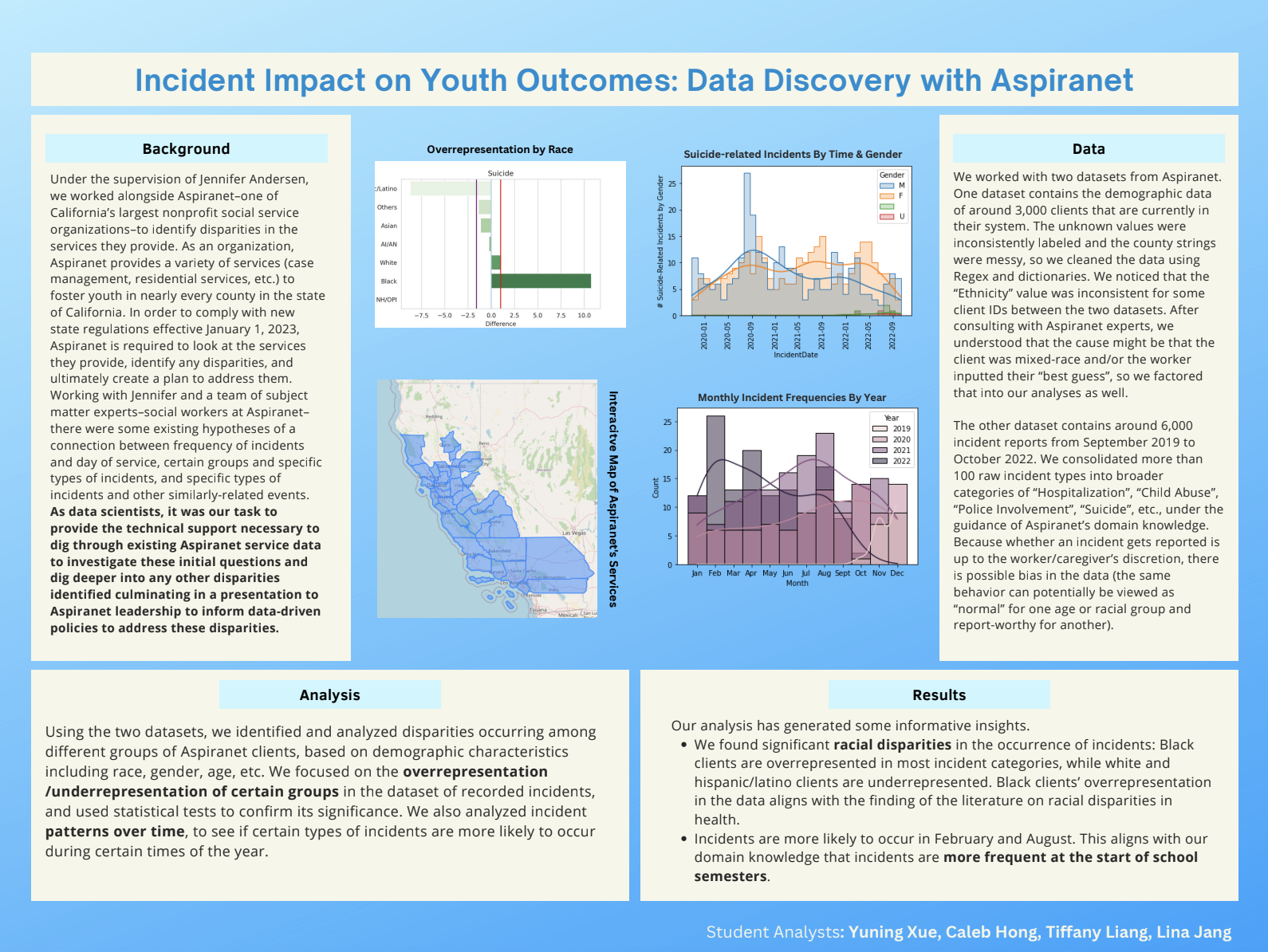Currently, our agency collects a great deal of data on adverse/unusual incidents that affect provision of various youth services in our programs. (For example, ER admissions due to suicidality, running away from home, contact with the police, child abuse, etc.) Data collection is consistent with requirements of the California Department of Social Services and in alignment with several current UC Berkeley data projects including the California Child Welfare Indicators Project (https://ccwip.berkeley.edu/) and the California Social Work Education Center (https://calswec.berkeley.edu/). However, with current resources we are only able interpret the data using simple retrospective trends. What we hope to accomplish is a more in-depth review of our data to:
1. Determine correlations between youth characteristics or incident types (For example, are youth older than 12 more likely to have certain kinds of incidents? Or are youth with one instance of running away more likely to have a police contact later?)
2. Determine impact of incidents on outcomes (For example, are youth with admissions to the hospital more likely to have a “successful” or “unsuccessful” outcome? Or are youth with one incident of running away more likely to have another?)
The number of variables to consider has not yet been finalized and can be explored with the Discovery Team, though Aspiranet is most concerned about the most “critical” incidents and their impact. The reporting from the Discovery Team would be most useful to our team if presented in a simple and visual manner.

